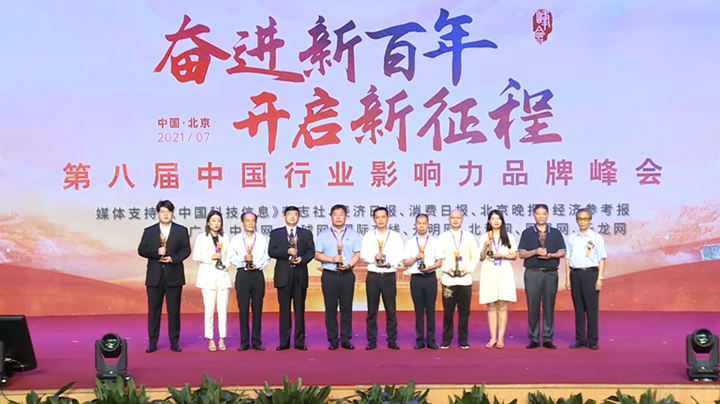外国人眼中的“中国白”|考古眼光中的“中国白” (一)——何翠媚

-
小陶陶
2021-08-12 15:45:59 1572
11770
编者按:
由柯玫瑰(Rose Kerr)、约翰•盖尔(John Ayers)所著《——德化白瓷》(Blanc de Chine—porcelain from Dehua)于2002年经新加坡亚洲文明博物馆出版,是继唐纳利《——福建德化瓷》之后的一本专门研究德化白瓷的专著,影响甚为深远。
该书收录的都为国外研究德化白瓷的知名学者所撰写德化白瓷研究资料。包括柯玫瑰的“德化器物款识介绍”,海蒂(Heidi Tan)的“鉴赏家探访”,约翰•盖尔的“的影响”,何翠媚(Chuimei Ho)的“考古眼光中的”,郭勒逊(Kenson Kwok)的“德化雕塑结构的一点看法”, 埃娃•施特勒伯(Eva Strober)的“德累斯顿的斯特朗大帝收藏的德化瓷”,以及附录介绍等七个部分,从不同角度介绍了德化白瓷。与此同时,该书收录的160件德化窑精品,为Hickley家藏,后捐赠给新加坡亚洲文明博物馆,是了解、品鉴、研究德化白瓷不可多得的艺术精品。
本栏目将定期精选出相关代表性文章进行翻译,以飨读者。然而,由于作者水平的局限,翻译过程中难免有所错漏,不足之处敬请各位读者提出宝贵意见。
Blanc de Chine in archaeological perspective: a tribute to Donnelly by Chuimei Ho
(翻译:德化陶瓷文化研究院 孙延燕)
Studying blanc de Chine ware is at once gratifying as well as frustrating. Gratifying because not only is the highly artistic porcelain attractive to view and touch; but also because the ware is one of the earliest ceramic traditions to be associated with artists in China. A blessing to researchers, blanc de Chine is free from the usual entanglements of identification and provenance. The ware is very recognisable, and Dehua county in Fujian has always been its home. Besides, researchers interested in trade and cross-cultural impacts are fortunate in that many good examples and records of blanc de Chine survive in the West. Yet, at the same time, researchers are frustrated because for centuries blanc de Chine potters tended to repeat a small range of successful designs, causing great difficulty in dating as well as in studying its industry's growth. The most disappointing factor is the lack of good records regarding blanc de Chine potter-artists, technology, and the workshops of this world famous ware.
对“”的研究既令人满意又令人沮丧。令人欣慰的是,这些具有高度艺术性的瓷器不仅吸人眼球而且有良好的触感,还因为这些瓷器是中国最早能与艺术家联系在一起的陶瓷传统之一。幸运的是,对于研究人员来说,这是一种福气,对的研究不会受到辨识和出处的纠缠。这些器皿非常容易辨认,福建的德化县一直是它的来源。此外,对贸易和跨文化影响感兴趣的研究人员很幸运,因为许多瓷器的典范和记载在西方幸存了下来。然而,与此同时,研究人员感到沮丧,几个世纪以来,陶器制造商倾向于重复一小部分成功的设计,对研究瓷器的断代和其工业的发展造成了很大的困难。最令人失望的因素是关于这一世界闻名的器物的艺术家、工业技术和工坊缺乏好的记录。
Given its limitations, P J. Donnelly’s Blanc-de-chine, The Porcelain of Tehua in Fukien, although published thirty years ago, is unquestionably the most definitive volume on the subject. It is also amongst the best scholarly works covering any type of Chinese ceramics published in any language prior to 1970. Subsequent studies add more details but do not surpass Donnelly's research parameters. It is with this admiration for Donnelly's work that I find the Hickley collection of special interest and importance; several Hickley pieces have passed through Donnelly's hands one way or the other.
鉴于这种局限性,唐纳利出版于30年前的《——福建德化陶瓷》,无疑是这个方面最权威的著作。它也是胜过1970年以前以任何语言出版的涵盖所有类型中国瓷器与陶器的最佳学术著作之一。随后的研究增加了更多具体信息,但没有超过唐纳利的研究。正是出于对唐纳利作品的赞赏,我发现希克利的收藏具有特殊的兴趣和重要性; 一些希克利的藏品以这样或那样的方式经过唐纳利的手。
This paper attempts to examine blanc de Chine ware based on archaeological data of the last thirty years; the kind of data Donnelly did not have in his time Has recent field work revealed more about the source of inspiration for blanc de Chine ware? What evidence of production has been found at the two excavations in Dehua? What else do we know about ancient blanc de Chine users and admirers other than that concerning the famous eighteenth century royal collector augustus the Strong? These questions were raised and dealt with in Donnelly’s work in which, in addition to inventory and dating, he dis-cussed the origin, production location, and market for this ware. In this short paper I will try to reassess the first three issues in the light of recent archaeological data.
本文试图根据过去三十年的考古资料来研究瓷器,用唐纳利那个时代没有的资料。最近的田野调查是否揭示了更多关于瓷器的灵感来源?在德化的两次挖掘中发现了什么生产证据?除了关于18世纪著名的皇家收藏家奥古斯都,我们还知道什么关于古代的使用者和崇拜者的事?这些问题在唐纳利的著作中被提出和处理,除了发明和年代测定外,他还讨论了这件器皿的来源,生产地点和市场。在这篇短文中,我将基于最新的考古调查试图对上述前面的3个问题进行重新阐述。
Origin: Was Blanc de Chine Developed out of a Local Dehua Tradition?
When Donnelly related sixteenth-to seventeenth-century blanc de Chine to thirteenth-to fourteenth-century qingbai(bluish-white)or yingqing (shadow blue)ware made in Dehua-sometimes also nicknamed Marco Polo ware-he speculated that blanc de Chine owed its inspiration to the latter(1969: 42). In other words, Donnelly saw blanc de Chine as a local Dehua product. His claim, unsupported in 1969, has now been proven to be correct.
当唐纳利将16-17世纪的与13至14世纪在德化制造的青白或是影清(有时也被称为马可波罗瓷)器皿相联系时,他推测的灵感源于后者。换句话说,唐纳利把视为当地的德化产品。他的主张在1969年没有得到支持,现在证明是正确的。
Kilns in Dehua that made the Marco Polo qingbai ware have been extensively surveyed since the late 1960s. Researchers are now certain that several localities in Dehua -sites which include Jiachunling, Dalongkou, Neiban, and Weilin in Sanban district; Qudougong,Houyao, Shipaige, and Taipinggong in Xunzhong district; and Wanyangkeng in Gaide made ceramics of this type(Map 2). In addition, Marco Polo qingbai was also made outside Dehua in the nearby counties-anyuan in Anxi, and Penglai in Yongchun Coastal sites such as the Xushan kiln in Putian and Dongtian kiln in Nanan reveal relevant ancient Dehua-type wares(FPM 1990: 150). They were found along the Jinjiang River which feeds into the entrepot Quanzhou, a thirteenth-to fourteenth-century city equivalent in status to today's Shanghai.
德化窑作为制造马可波罗青白瓷器的品种,自20世纪60年代末以来,人们对其进行了广泛的调查。研究人员现在确定,德化遗址包括家春岭、大垄口、内坂、三班镇的尾林等地;浔中镇屈斗宫、后窑、石排格、太平宫;而盖德碗洋坑制作这种陶瓷(图2)。此外,德化附近的安溪安源、永春蓬莱也制作马可波罗青白瓷,莆田许山窑、南安东田窑等沿海遗址也揭露了相关古德化型器物。它们是注入泉州的晋江流域被发现的,这是一个13至14世纪的城市,与今天的上海相当。
In 1975 Qudougong in Dehua was excavated(FPM 1990). A 130-metre long climbing kiln located right in the middle of Dehua township in Qudougong, apparently made both Marco Polo qingbai ware, and some unusual white ware which I will call White Ware I.Qingbai ware of course was not a Dehua or Southern Fujian invention, and the Marco Polo type is a local variation of a wider Central and Coastal China qingbai tradition. White Ware I, however, was rather unique; it was made in no other place in China. The ware is thick porcelain with a translucent paste, rather plain in shape and design, and the whiteness of the glaze has a soft and creamy lustre. Even though White Ware I is not as refined as the typical blanc de Chine pieces of later date, it is easy to see the connection between them (FPM 1990: 81). The finding of White Ware I is groundbreaking in two ways. First, the ware Is contemporary with, not a later development of, Marco Polo qingbai. Second, Qudougong was active during the mid-to late fourteenth century, thus placing White Ware I 150 years prior to the beginning of blanc de Chine. Based on the Qudougong findings, we can safely conclude that blanc de Chine was derived from White Ware I, not Marco Polo qingbai ware in Dehua. It took Dehua potters almost a century and a half, between White Ware I and blanc de Chine, to perfect the formula.
1975年屈斗宫窑被发掘。它是一条位于德化中部的长130米的龙窑,很明显,它制作马可波罗青白器,又有一些不寻常的白色器皿,我称之为白瓷1号。青白器皿当然不是一项德化或闽南的发明,马可波罗瓷是中国中部和沿海地区较广泛的青白传统的地方性变异。然而,白瓷1号却相当独特;在中国其他地方没有做的。该瓷器胎体厚实自带半透明釉料,形状和设计相当质朴,釉面有松软、柔和的光泽。尽管我的白色器皿不如后来的典型瓷器那么精致,但很容易看出它们之间的联系。白瓷1号在两方面的发现是开创性的。首先,该器物是与马可波罗青白瓷同时代出现,而不是后来发展的。其次,在十四世纪中后期活跃,因此将白瓷1号定为比150年前诞生前更早。根据屈斗宫的发现,我们可以很确切地得出是从德化白瓷1号中衍生出来的,而不是德化的马可波罗青白瓷器。德化陶艺师花了将近一个半世纪时间,才完成了白瓷1号和之间完美配方的转化。
Researchers are now in a position to raise questions leading to a better understanding of the rise of blanc de Chine ware. For instance, why, out of the many contemporary kilns in the Jinjiang River area, were potters at Qudougong alone interested in experimenting with the new product White Ware I, which was not to pay off for about two centuries? One possible reason could be the nature of the data -other kilns might also have deve-loped White Ware I, but no such sherd has yet surfaced. The other possibility is that Qudougong potters alone had the required skills which potters carefully kept to them- selves. This may explain the rather slow progress leading to the making of blanc de Chine. What is surprising is that even during the eighteenth and nineteenth centuries when blanc de Chine was no longer a top secret technique, it was still the Dehua potters who made the ware. Few other neighbouring potters tried or succeeded.
研究人员现在可以提出问题,从而更好地理解瓷器热的兴起。例如,在晋江地区的许多当代窑中,为什么只有屈斗宫的陶工对新产品的实验感兴趣,而这种新产品的研发将在两个世纪内不会得到回报?一个可能的原因可能是资料的原因——其他窑也可能开发出白瓷1号,但这样的瓷器标本还未见天日。另一种可能是,屈斗宫陶工将精心掌握的技能留给了自己,这可能解释了生产的缓慢进程。令人惊讶的是,即使在十八、十九世纪,已不再是绝密技术的时候,仍然是德化的陶工制造了这种瓷器。几乎没有其他邻近的陶工尝试或成功。
责任编辑:陈美珠
















